
Gurus Alphabet Open The Gates For Celtic Alphabet Letters Tattoos By Using These Simple Tips
Letters and letter names The traditional Irish alphabet carved in Gaelic type on a building in Dublin, with each type of diacritic ( síneadh fada and ponc séimhithe) as well as the Tironian et. The traditional Irish alphabet ( aibítir) consists of 18 letters: a, b, c, d, e, f, g, h, i, l, m, n, o, p, r, s, t, u .
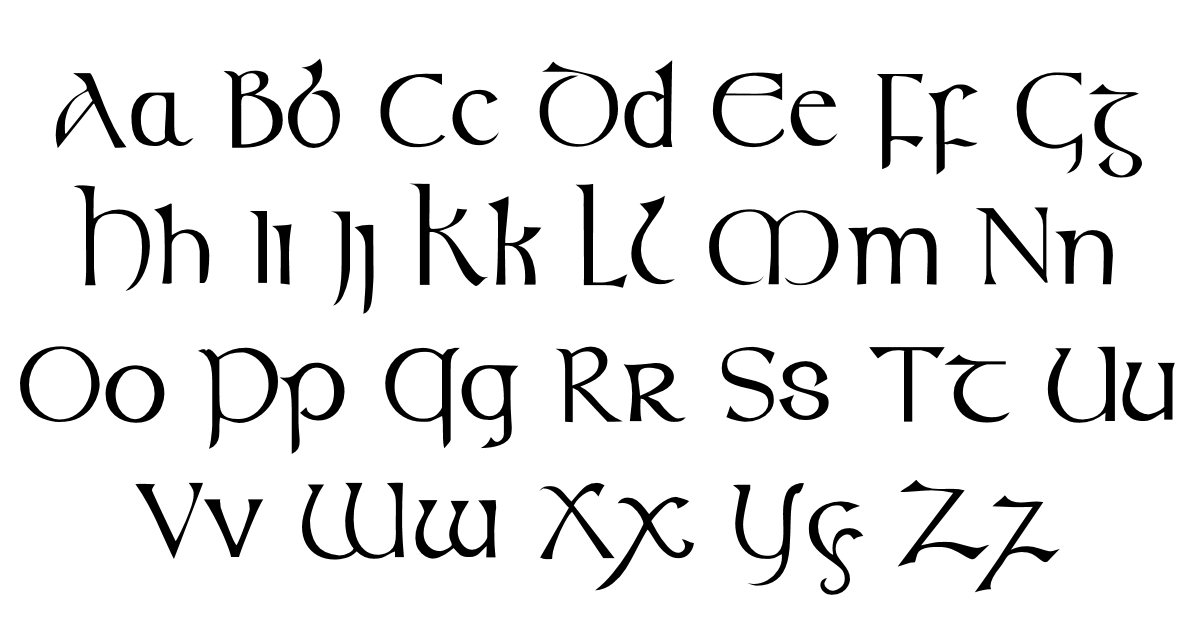
Celtic Font by Sam Wang FontSpace
á (pronounced 'aw' as in 'paw') é (pronounced 'ay' as in 'bay') í (pronounced 'ee' as in 'wee') ó (pronounced oh as in 'no') ú (pronounced 'oo' as in 'too') Note on the Ogham Alphabet Ogham writing-photo courtesy of Adactio
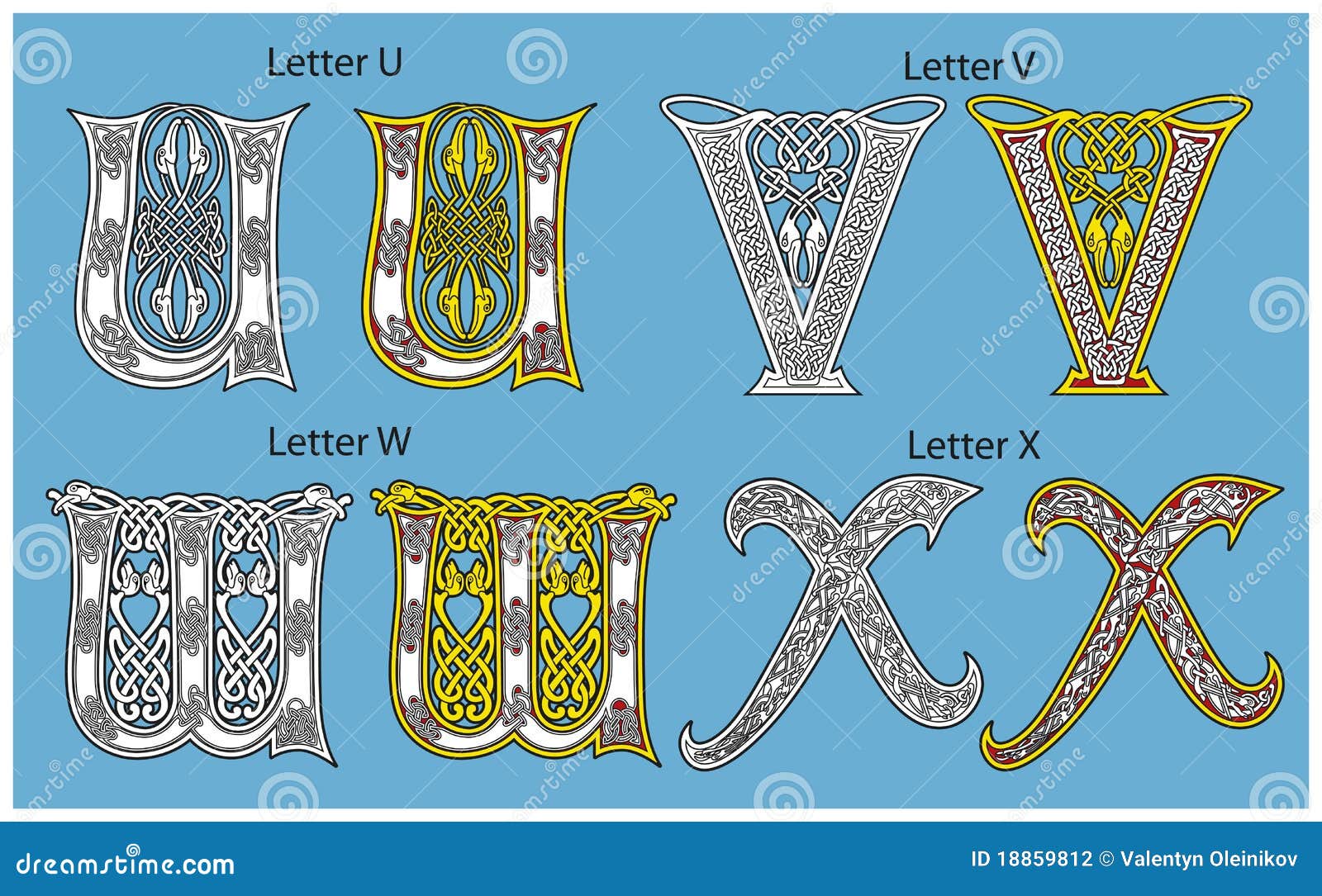
Ancient Celtic Alphabet Stock Photography Image 18859812
Native name: Gaeilge [ˈɡeːlʲɟə] Language family: Indo-European, Celtic, Insular Celtic, Goidelic Number of speakers: c. 1.77 million Spoken in: Irish, and also in the UK, USA, Canada, and Australia First written: c. 4th century Writing systems: Ogham, Gaelic script, Latin alphabet
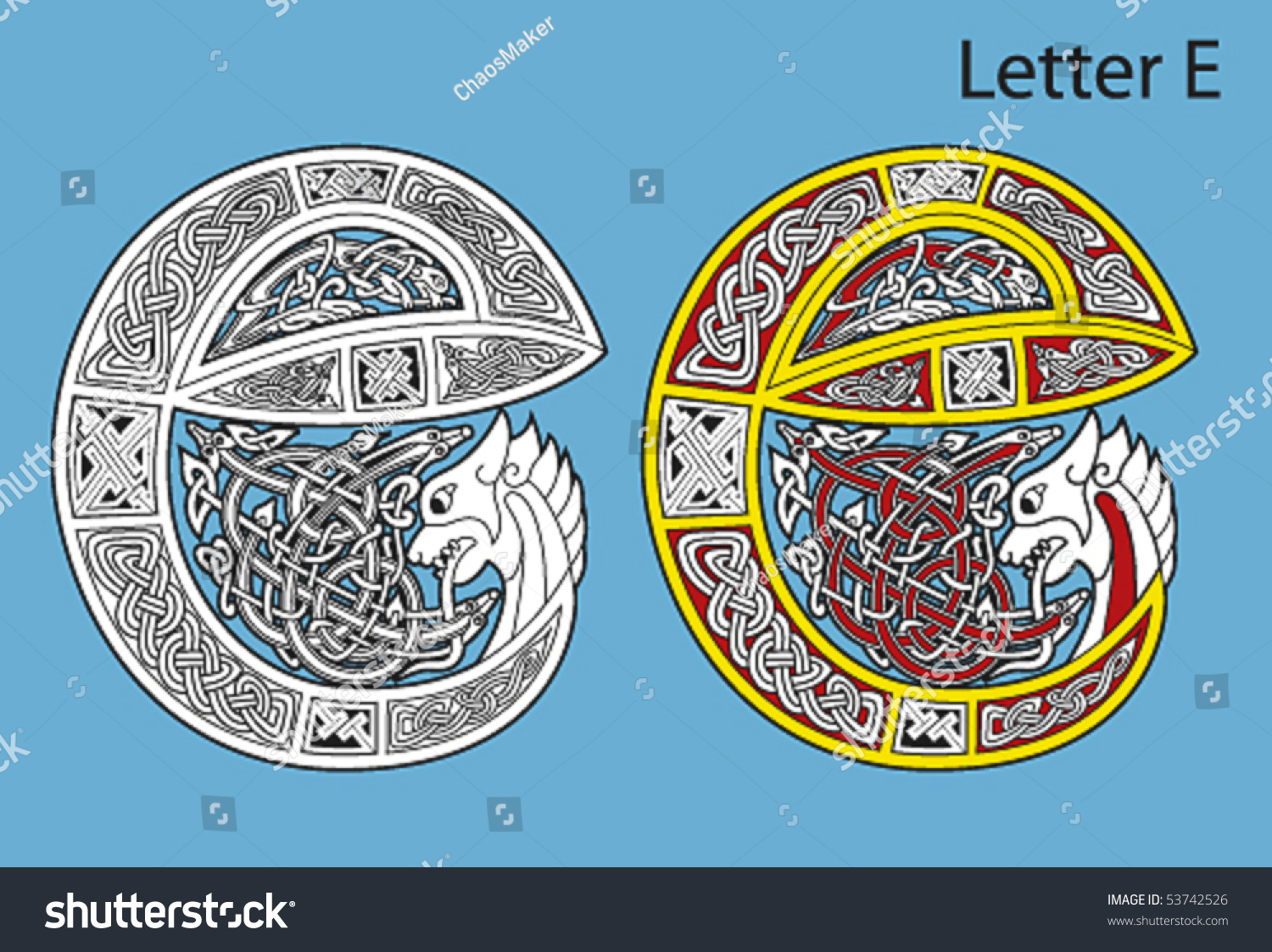
Ancient Celtic Alphabet 26 Letters vetor stock (livre de direitos) 53742526 Shutterstock
One of the stranger ancient scripts one might come across, Ogham is also known as the 'Celtic Tree Alphabet'. Estimated to have been used from the fourth to the tenth century CE, it is believed to have been possibly named after the Irish god Ogma but this is debated widely. Ogham actually refers to the characters themselves, the script as a whole is more appropriately named Beith-luis-nin.

celtic alphabet Google Search Alphabet art, Celtic alphabet, Illuminated letters
A Guide to the Ogham Alphabet. August 4, 2011. Ogham is an ancient Irish alphabet. Each letter represented by a mark along one central line. Dating back to the 4th century, it is the earliest form of writing to be found in Ireland. Examples left by our ancestors can still be seen in Ireland and Britain to this day.
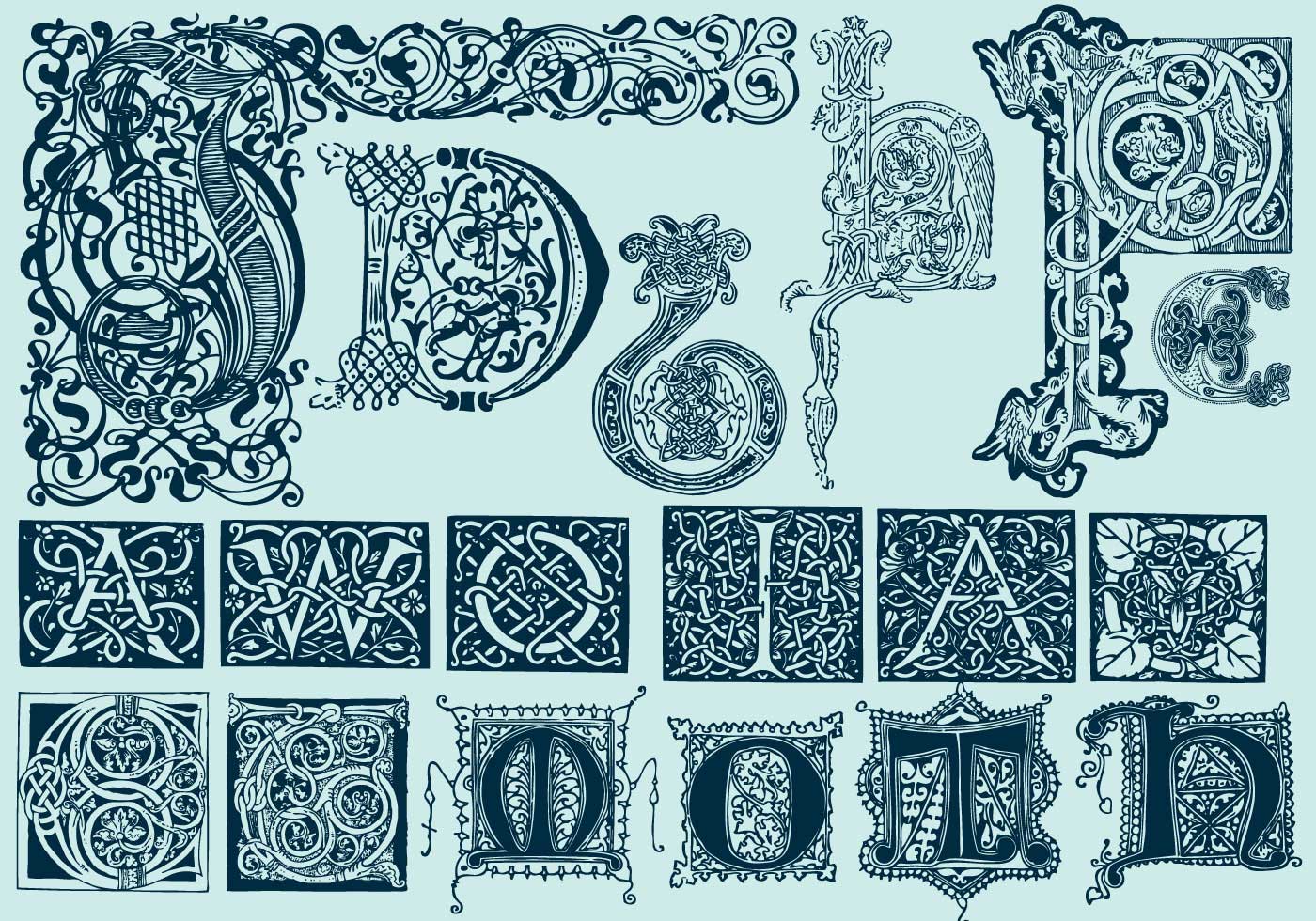
Celtic Alphabet
Ogham (/ ˈ ɒ ɡ əm / OG-əm, Modern Irish: [ˈoː(ə)mˠ]; Middle Irish: ogum, ogom, later ogam [ˈɔɣəmˠ]) is an Early Medieval alphabet used primarily to write the early Irish language (in the "orthodox" inscriptions, 4th to 6th centuries AD), and later the Old Irish language (scholastic ogham, 6th to 9th centuries).There are roughly 400 surviving orthodox inscriptions on stone.

Celtic/Gaelic Alphabet Scots irish, Irish gaelic, Celtic
This is the ancient Celtic Tree Alphabet known as Ogham (pronounced owam). Archaeological linguists have managed to translate the symbols, yet no one knows for certain how or why this language came into existence. Efforts are being made to preserve the relics; however, the stones are weathering and crumbling at an alarming rate.
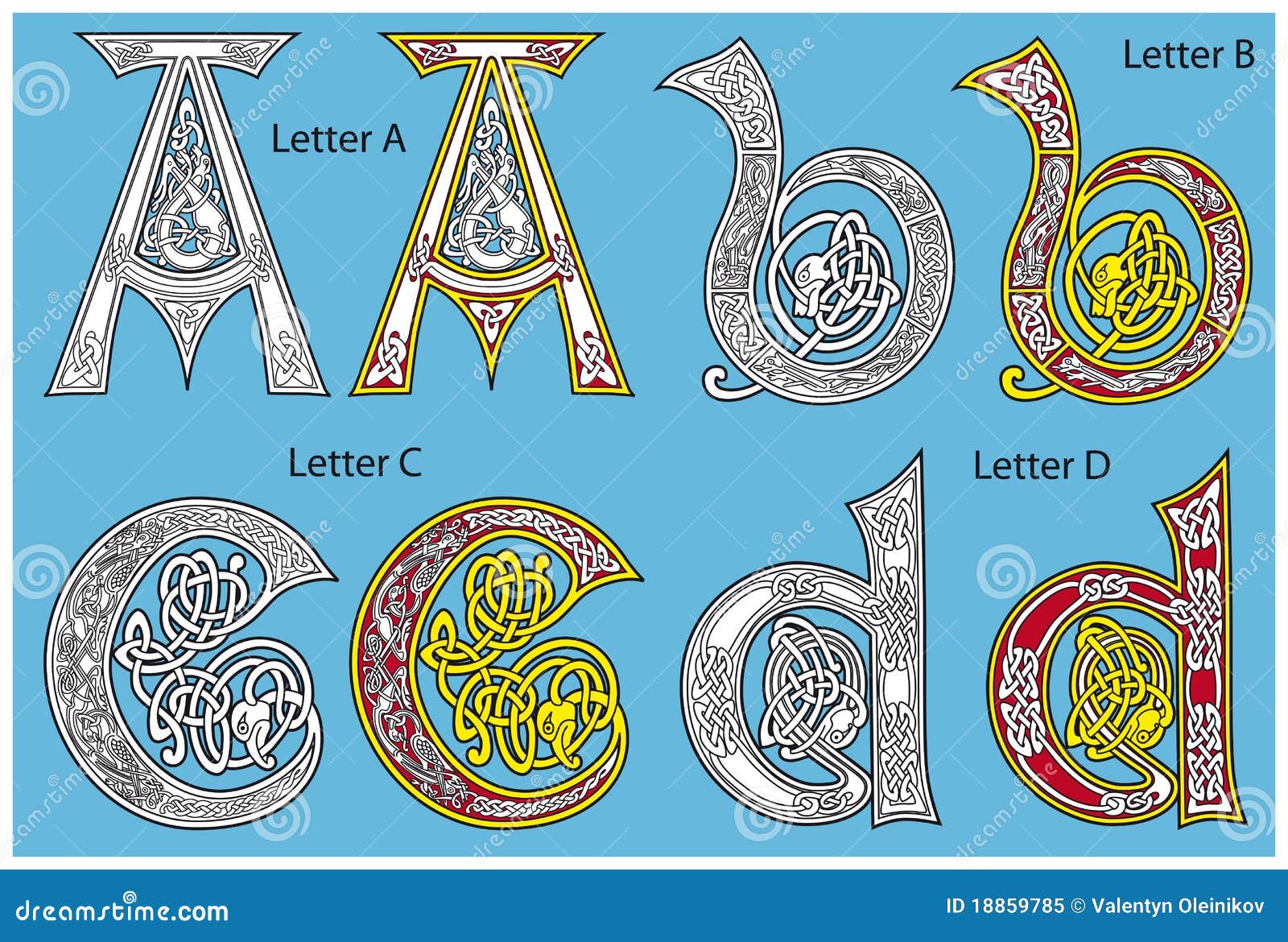
Ancient Celtic alphabet stock vector. Illustration of figure 18859785
Old Irish, also called Old Gaelic [1] [2] [3] ( Old Irish: Goídelc, Ogham script: ᚌᚑᚔᚇᚓᚂᚉ; Irish: Sean-Ghaeilge; Scottish Gaelic: Seann-Ghàidhlig; Manx: Shenn Yernish or Shenn Ghaelg ), is the oldest form of the Goidelic/Gaelic language for which there are extensive written texts. It was used from c. 600 to c. 900.

Ancient Celtic alphabet (26 letters) Celtic alphabet, Ancient symbols, Celtic art
Its origins are uncertain: it might be named after the Irish god Ogma, or after the Irish phrase og-úaim (point-seam), which refers to the seam made by the point of a sharp weapon. Ogham is also known as or ogham craobh (tree ogham) beth luis fearn or beth luis nion, after the first few letters.

Ancient Celtic alphabet (26 letters) — Stock Vector 3867127
Native name: Gàidhlig [ˈkaːlikʲ] Language family: Indo-European, Celtic, Insular Celtic, Goidelic Number of speakers: c. 88,645 Spoken in: Scotland and Canada First written: c. 12th century Writing system: Latin alphabet Status: classified as an indigenous language in Scotland A brief history of Scottish Gaelic
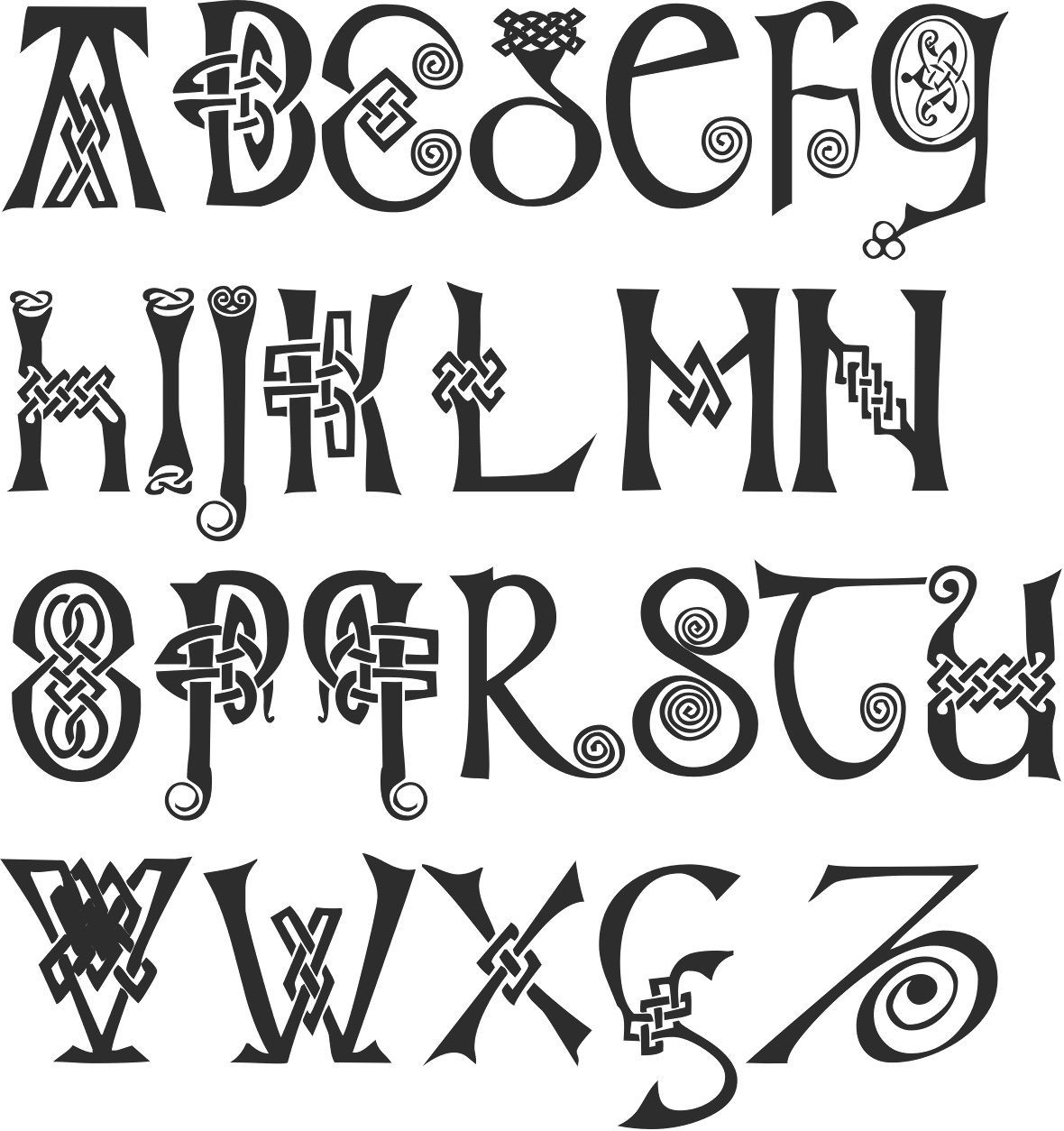
MyFonts Celtic typefaces
The Celtic Ogham alphabet has long been shrouded in mystery, but many Pagans use these ancient symbols as tools of divination, although there's no real documentation of how the symbols were used originally. You can make your own Ogham divination set by drawing the symbols on cards or notching them into straight sticks. 01 of 25 B - Beith

These stunning Celtic letters are based on the Illuminated Letters used by the ancient Irish
Contemporary: sí, Bríd (same pronunciation) Typically pre-reform Irish would be written in Seanchló (see below), with dots over the consonants replacing the "h's," but it can be written as above as well. Seanchló
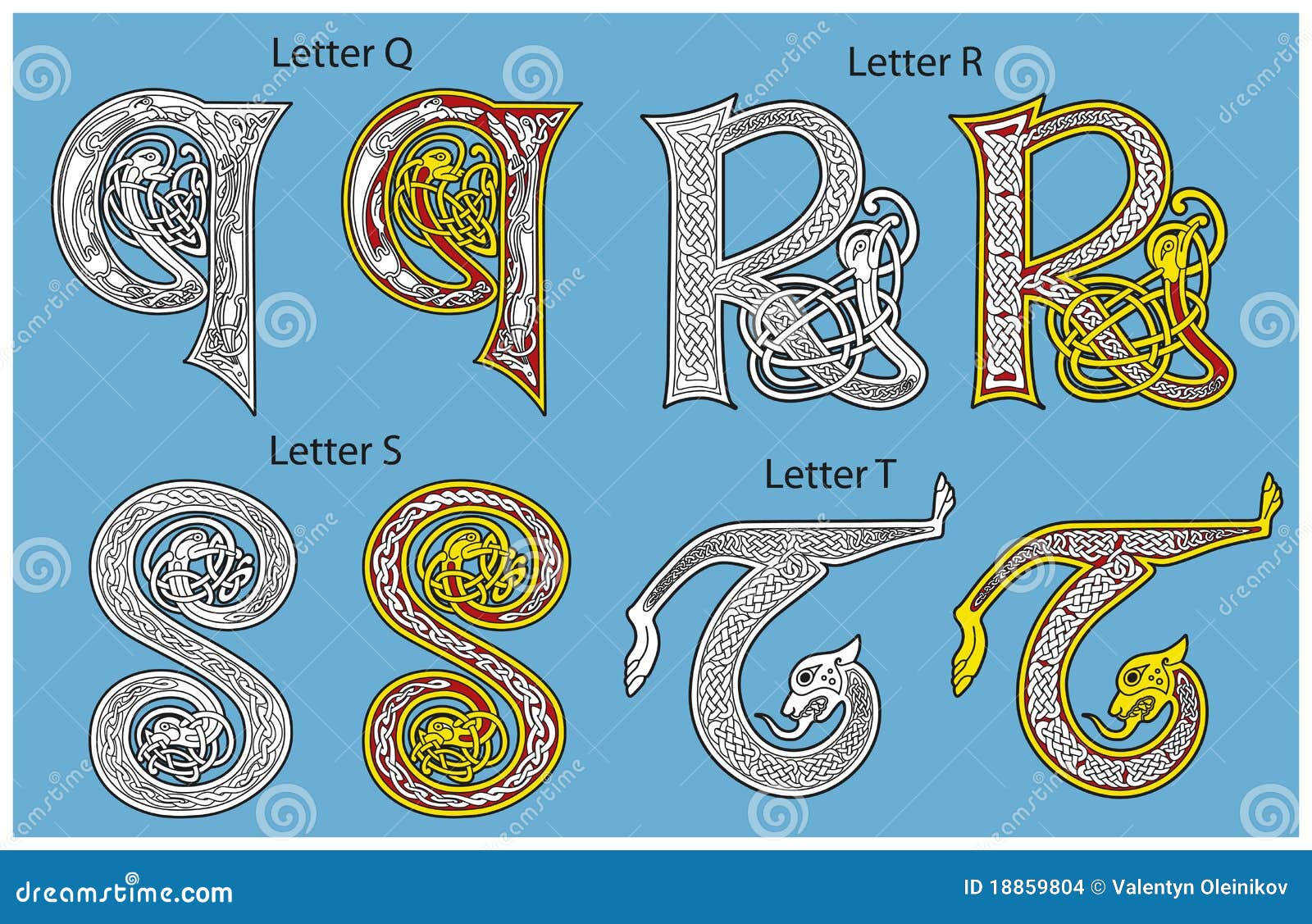
Ancient Celtic Alphabet Stock Images Image 18859804
Traces of Ogham can still be found all across Ireland. The ancient script of Ogham, sometimes known now as the 'Celtic Tree Alphabet,' originally contained 20 letters grouped into four groups of five.

Ancient Celtic alphabet (26 letters) Celtic alphabet, Lettering alphabet, Celtic symbols and
The Ogham alphabet graphically represented the Pictish and Irish languages on stony monuments, mostly between 400 and 600 BC. When the spread of Christianity in Europe began, the system was considered a pagan legacy, and gradually, people stopped using it. However, the knowledge of the ogham alphabet is still alive, and its samples attest to.
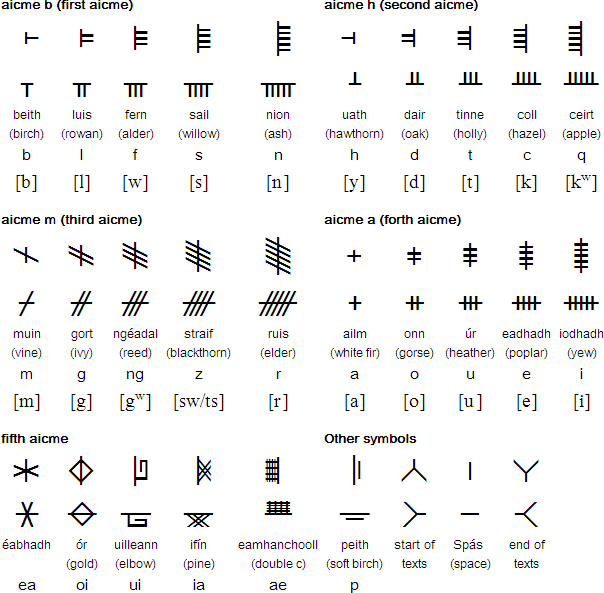
Significato delle rune celtiche alfabeto Ogham storia, miti e leggende
Ogham is an Early Medieval alphabet used to write the early Irish language, Primitive Irish. Evidence shows that Ogham was in use since at least the 4th century, long before the arrival of the Latin alphabet to Ireland. There are around 400 surviving inscriptions on stone monuments throughout Ireland and also several in western Britain left by.
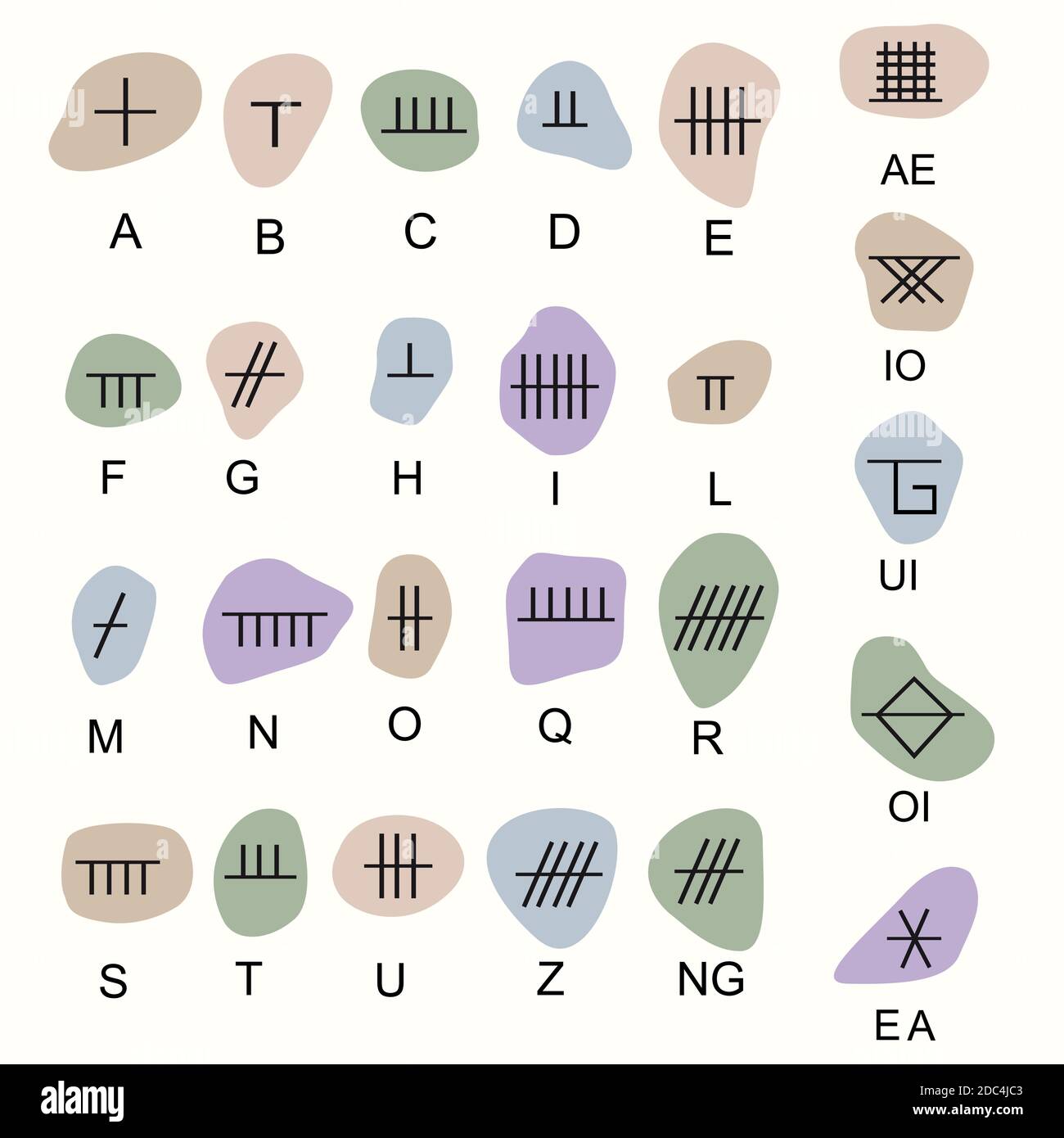
Set of old sacred celtic Ogham alphabet. Ancient occult symbols, on white. Vector illustration
The first Gaelic typeface was designed in 1571 for a catechism commissioned by Elizabeth I, Aibidil Gaoidheilge & Caiticiosma by Seán Ó Cearnaigh, and this style of typeface was used for printing Irish until mid-20th century. The Gaelic script is known as An Cló Gaelach (Gaelic type) in Irish.